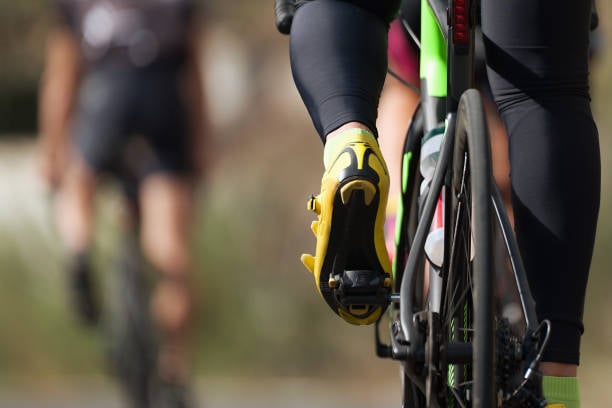If you wanted to, you could ride your bike in a pair of Crocs, but there would be serious drawbacks to doing so. Cycling-specific footwear features a cleat or grip that is tailored to the pedals you are using. Biking shoes are often just as lightweight as running shoes but have a sturdier, more protective, and more long-lasting structure. This article seeks to educate you on the various cycling shoe kinds and the characteristics that distinguish each variation, whether you are interested in road cycling shoes, mountain bike shoes, or a casual indoor cycling shoe.
TYPES OF CYCLING SHOES
In the field of cycling shoes, there are three primary categories: road cycling shoes, MTB cycling shoes, and casual bike shoes. MTB cycling shoes can have an integrated cleat with a sticky tread or a flat, grippy sole similar to a tennis shoe. Since they are not designed for walking, road bike shoes typically feature no gripping tread and a cleat on the underside of the shoe. Last but not least, casual bike shoes are a hybrid between cycling shoes and are utilized for indoor bike trainers or for bicycling in a more relaxed environment where you will be mixing riding and strolling. These shoes often look like running shoes but also contain a low-profile gripping tread and an integrated cleat on the bottom of the foot.
MTB Cycling Shoes
There are two types of MTB cycling shoes: flat pedal shoes (also known as platform pedal shoes) and clipless shoes. While clipless shoes have a built-in cleat box in the sole that attaches into clipless pedals, flat pedal shoes are designed for conventional platform pedals.
Regardless of whether your shoes are compatible with pedals, mountain bike shoes offer unique qualities that are not present in other types of cycling shoes. For maintaining touch with your pedals, mountain shoes have a gripping tread. To ensure longevity and prevent damage from the pedal pins, the rubber used on the bottom of the shoe is a little bit firmer than that of a typical tennis shoe. Some mountain biking shoes include extra tread on the heel and toe, which helps when you have to push your bike up a hill while getting off and wandering around on the dirt. An impact-absorbing midsole is yet another essential component shared by all high-end mountain biking shoes. These are often manufactured from a firm EVA foam to lessen the shock and impact pressures that riders on mountainous terrain endure. Mountain bikers must maneuver themselves over boulders and uneven terrain, unlike road cyclists, which necessitates strengthened toe caps and a more robust shoe design in general. Depending on the quality and price of the shoe, mountain bike shoes can have a variety of closure systems. Entry-level shoes typically utilize a classic lace closure, while middle- and high-end shoes may combine a lace and velcro strap or even just employ a wire retention system like a BOA dial.
HOW TO MEASURE YOURSELF FOR CYCLING SHOES
It might be challenging to determine your cycling shoe size because there are so many various brands of cycling shoes available, and because US, EU, and Euro countries use different systems of measuring. No need to stress; we have a straightforward, step-by-step procedure for determining your ideal size cycling shoe!
1. Measure your foot
2. Find the correct shoe size in your favourite brand
3. Check that the shoes are the right width
4. Order the shoes and cleats
CLIPLESS VS. FLAT PEDAL CYCLING SHOES
Although both flat pedal shoes and clipless shoes have their own unique advantages, there are some prevalent misconceptions about both types of footwear in the mountain biking community. One widespread misconception is that clipless pedals are only for experienced riders and flat bike pedals are for novices. This is just untrue, and some of the most recognizable riders prefer flat pedal shoes. Flat pedals are more versatile than clipless pedals, especially in aggressive riding situations when one may need to stick their foot out to "catch oneself." Flat pedals are most popular with aggressive trail and downhill mountain bike riding. Because the foot is attached to the pedals with clipless pedals, your legs will provide power for both the push and the draw of the pedal stroke. This gives clipless pedals an obvious benefit in terms of pedaling efficiency. A clipless arrangement can also be taken into consideration to give the rider a more controllable connection in technical trail sections, but this particular situation can also be disadvantageous if you need to suddenly use your feet or lose your balance.
Contact us today for more details on our design service.

